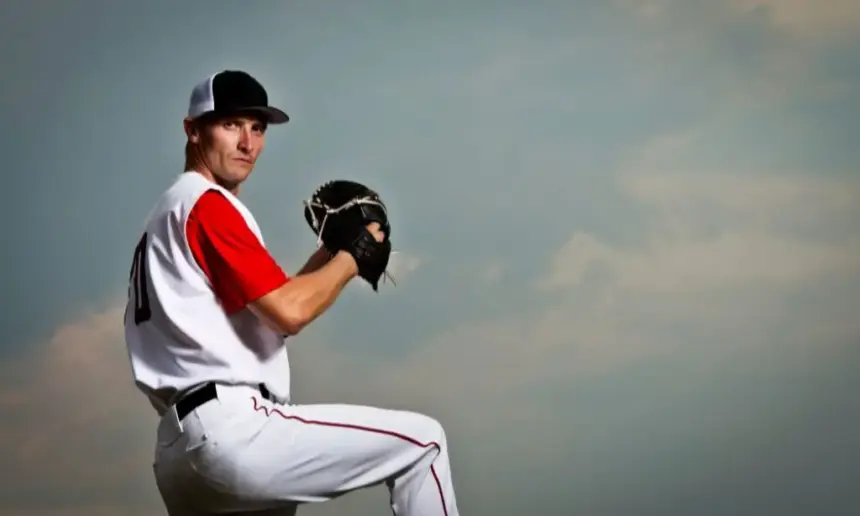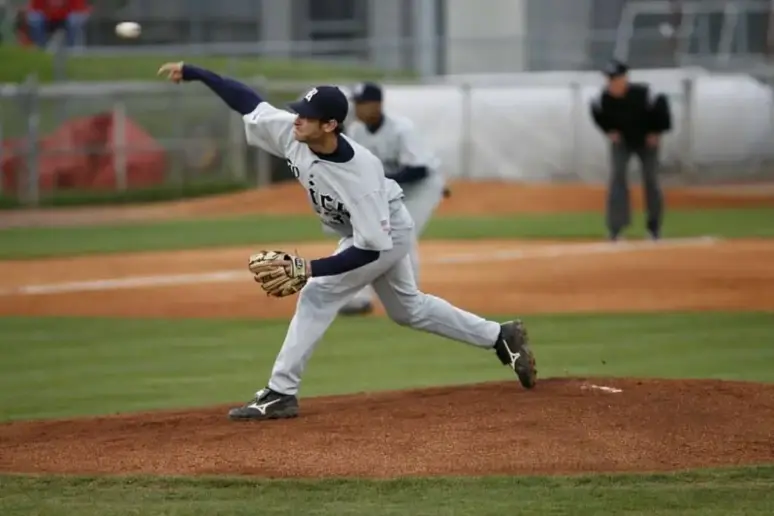Why Do Pitchers Use Vaseline? (Answered!)
Cherished for more than a century and a half as America’s pastime, baseball is a game beloved by millions.
However, it also has an uglier side, often hidden from the regular fans. Cheating has been a part of baseball almost from the beginning.
Steroid use is something that grabbed the most headlines, but throughout history, players have been trying to gain an edge in numerous other ways.
These include sign stealing, corked bats, and doctoring of baseballs.
The last one has particularly been in the eyes of the public lately, as the league is aggressively trying to put a stop to it.
For a long time, pitchers have been using various foreign substances to doctor the balls and improved their throws, most commonly the vaseline.
Below, I’ll get into it in more detail and explain why do pitchers use vaseline and how it provides them with an unfair advantage.
Table of Contents
Why Do Pitchers Use Vaseline?

The primary motivation for doctoring baseballs is to change their rotation.
The change in rotation makes the ball move unnaturally and makes it more difficult for batters to read the pitch.
Pitchers use the “sticky stuff”, like pine tar, to improve the grip and increase the ball rotation.
With vaseline, it’s the other way around, the goal is to inhibit the rotation.
Basically, it helps them throw one of the toughest pitches in baseball, the knuckleball.
The knuckleball, ideally, should rotate about half of a revolution its way to the plate. This is the main reason why do pitchers use vaseline.
They can throw the knuckleball without the knuckleball wind up, leaving batters unprepared.
Spitball
The ball doctored this way is usually dubbed the spitball. With the help of vaseline, pitchers lubricate the ball.
Saliva or hair grease are also sometimes used for this purpose.
The ball lubricated this way helps hurlers throw the pitch which practically slides of their fingers.
The lubrication between the fingers and the ball results in a looser grip, or almost no grip at all.
This way, pitchers are capable of generating almost no backspin on the ball. The pitch that is thrown this way usually drops much faster than it would normally do.
This deceives the batter who’s expecting the ball to end its trajectory higher up.
Most of the batters have seen thousands of pitches in their career, so the pitchers are trying to get an edge by changing the expected behavior of the ball.
What is a Spitball?
Spitball is a name for an illegal pitch in baseball where the ball has been doctored with a foreign substance.
In the case of the spitball, these substances include saliva, vaseline (petroleum jelly), sunscreen, mud, or something similar.
As I explained, applying these substances to the ball causes the ball to behave in an unusual manner.
This technique can switch the weight to one side of the ball, alter wind resistance, or inhibit the ball’s spin.
This causes the ball to sharply deviate or “break” during the flight and suddenly drop.
The spitball is also known as spitter, shine ball, mud ball, or supersinker. The spitball has been around almost as long as the game itself.
As you may have guessed, it got its name because early players used their own saliva to doctor the ball.
The popularity of spitball and the increased number of freak pitches caused by it led the MLB to partially prohibit it in 1920.
Several legendary players and Hall-of-Famers have been known to use the spitball.
The most famous among them are Preacher Joe who played for the Dodgers in the 50s and two-time Cy Young winner Gaylord Perry.
Today, spitball is almost non-existent in baseball, for several reasons.
First of all, it’s not an easy pitch to throw and, even though it’s considered cheating, it still requires a lot of skill.
In addition, young players usually don’t have older, experienced spitballers to teach them. Secondly, the development of technology made it much harder to get away with it.
With cameras and zoom lenses everywhere, it’s almost impossible for spitball to go unnoticed. Not to mention sensors measuring spin rates.
How to Throw a Spitball

If you’re willing to try throwing a spitball, here are a few pointers on how to do it.
Prepare Vaseline
Most of the players who used to throw spitball would put a load of vaseline somewhere on a uniform (behind the knee or inside the glove) or a baseball hat.
Before the pitch, all you have to do is wipe that vaseline with your fingers.
Apply A Small Amount Of Vaseline Or Saliva To The Ball
There is no particular spot where you should apply saliva or vaseline.
After all, the goal is to achieve unpredictability.
Throw A Regular Fastball
Most of the old spitballers advise to just pitch a conventional throw. The spit or the vaseline should do most of the work here.
Pitch as you would normally do with the fastball, with the same grip and technique.
The end result, however, should be more like throwing a knuckleball.
As lubrication on the ball and on the fingers will make things more slippery, this may take some practice and get used to.
Lubricate Only Fingers
Another way to throw a spitball is to only apply saliva or vaseline to your fingers.
Note that, in this case, you should keep the fingers of the seams. When throwing, simply squeeze the ball as it leaves the hand.
This will also result in an unpredictable trajectory of the ball.
Conclusion
It seems that spitballs and vaseline are slowly becoming a thing of the past. Throughout history, they were first legal, then semi-legal, and finally, completely banned.
If there are players still using vaseline, the latest MLB’s crackdown on the use of foreign substances will likely make them an extinct species.
Starting with the 2021 season, any illegal substance used to gain an unfair advantage will result in a 10-game suspension for the player.
Of course, the debate on the use of these illegal aids will continue to rage on. Many players and fans don’t even consider it cheating.
The most famous perpetrator, Gaylord Perry, often spoke openly about it and even titled his autobiography “Me and the Spitter”.




